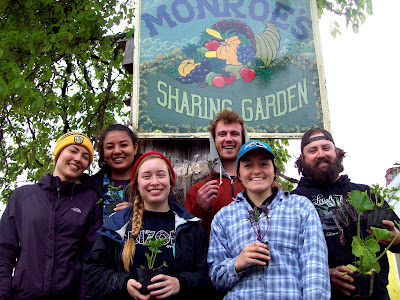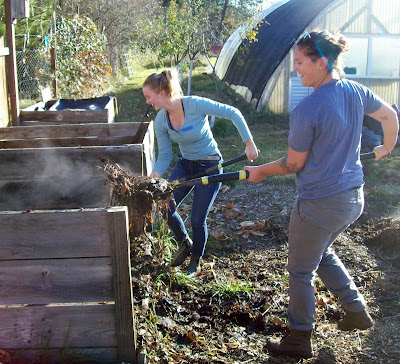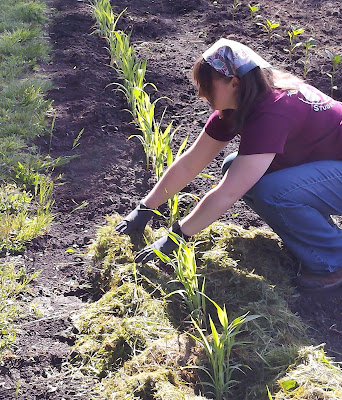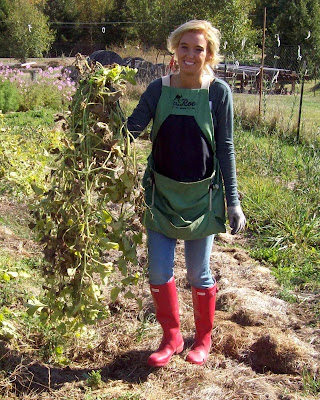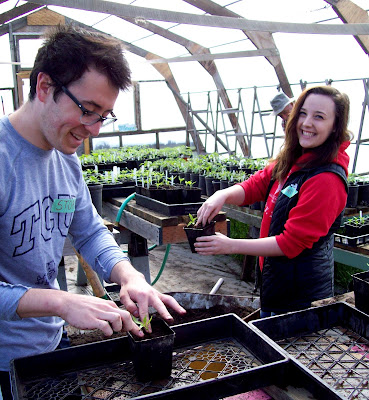Seed Saving, Stocking Up, the Amazing Quince, Pumpkin Pie from Scratch and other seasonal blessings...
Greetings, friends of the Sharing Gardens, near and far. We're working on an end of the season summary-post but thought you might find some of these previously published posts relevant to your own transition from summer's bounty to the quiet of winter. Enjoy!
(Image: Three Sisters Abundance, from Mike Brunt: an amazing elder in our community who is dedicated to spreading the word about the importance of saving our own seeds.)
Re-planting Carrots or Beets for Seed: If you wish to save seeds from beets, carrots or onions next year, now
is the time to set aside your best specimens so they have a period of
dormancy before you re-plant them in the winter/spring. See the linked post for
ideas on storage. This will only work if you grow heirloom/open-pollinated/non-hybrid varieties.
 |
| Image: by Llyn Peabody |
Amazing Quince! - Sugar-free Recipe: Here in the Pacific NW the quince fruit thrives. It's flavor, once baked or steamed (and with a touch of sweetener added) tastes like a combination of pears and lemons with a hint of peach and rose-oil! Ambrosia! Follow this LINK for a detailed, sugar-free recipe, prepared from scratch. (Image: right, www.modernfarmer.com)
Making Pumpkin Pie from Scratch: Making pumpkin pie from scratch is truly a labor of love! How much easier it is just to open a can of puree. Pumpkin pie filling can be made from sugar-pie pumpkins, or any kind of sweet, golden-meat type of squash. Delicata, Buttercup and Sweetmeat are all good varieties. Follow this LINK for the full recipe to make pumpkin pie filling that you can freeze and have on hand for a delicious taste of autumn throughout the year.Saving Tomato Seeds: If you're new to saving seeds, tomato seeds are an excellent place to start. Because they are 'self-fertile' (having both male and female parts in each flower) they tend to breed true and not cross with other varieties grown nearby. Be sure you are saving seeds from an heirloom/non-hybrid variety. Hybrid seeds artificially marry two different parent plants and, when seeds are saved, they often revert back to one or the other parent which can yield unsatisfying results.
Tips for Maintaining a Well-Stocked Pantry: Whether you’re concerned about preparing for a natural disaster or economic hard times, or just tired of opening your cupboards and not having a variety of tasty, nutritious items to choose from, it’s always a good idea to get in the habit of stocking, and maintaining one’s pantry. Here are some tips to help.The Coming Anastrophe (the opposite of Catastrophe): Because having an optimistic view about all the challenges the world is facing is always in season, here is a post from our All Things Sharing site that we hope you will find uplifting.From the post: Some people think that we can't really move forward, to heal society and all its ills, until there's a 'collapse' or 'catastrophe' of some kind; otherwise (the story goes) we'll just keep putting patches on a system that's so broken that anything built on top of it will inherently be flawed. Corbett offers an alternative story: that an 'anastrophe' would be a sudden and rapid awakening of humanity that would lift us unified out of the many troubles facing the world.
He says that the change must begin at the community/neighborhood level. I admit that his views can seem a bit utopian but I appreciate him for shining a spotlight in a new direction -- away from the fascination many people feel in waiting for 'the BIG one'; the catastrophe that will hopefully, finally catalyze us out of the many messes the world is in. CLICK HERE for full post.
We hope your autumn is full of beauty and healthy harvests! Llyn and Chris - The Sharing Gardens
 |
| Autumn Beauty sunflower with a honey bee (loaded with pollen!). |











